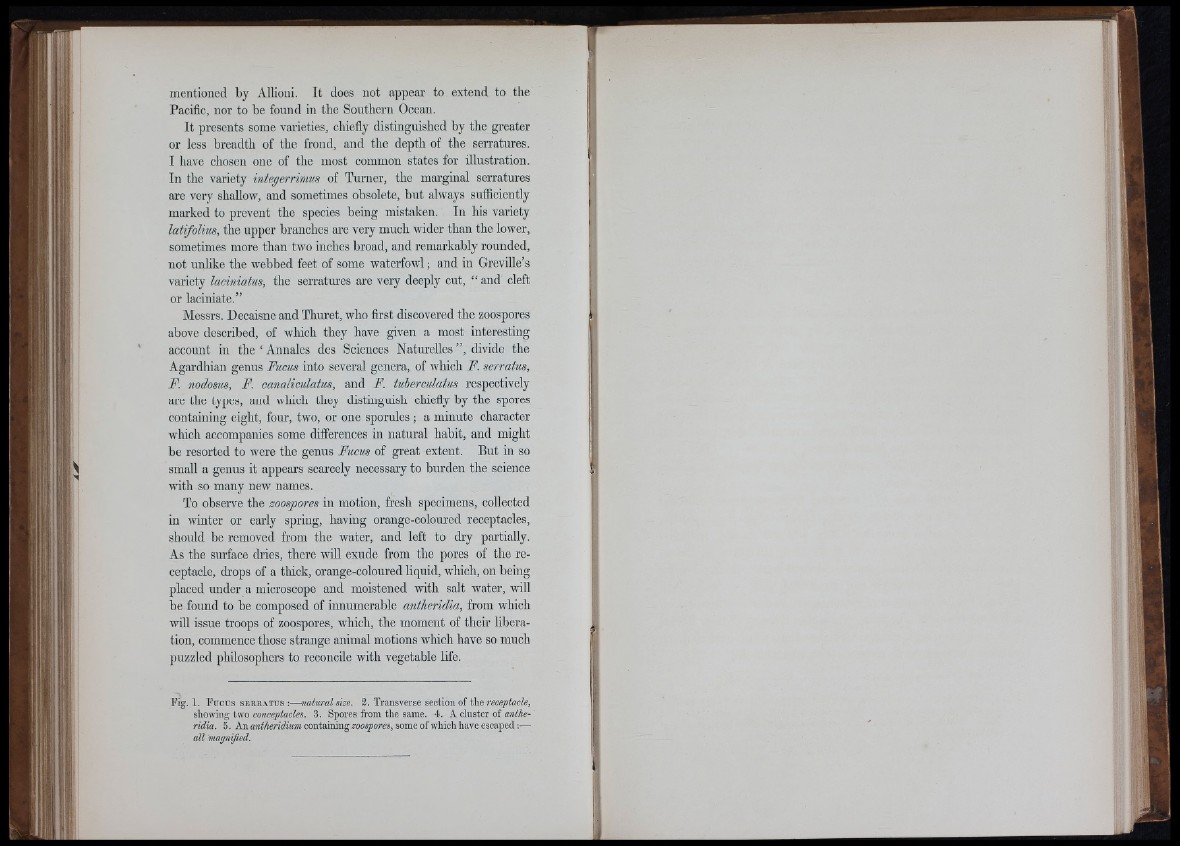
mentioned by Allioni. It does not appear to extend to tbe
Pacific, nor to be found in tbe Soutbern Ocean.
It presents some varieties, cbiefly distinguisbed by tbe greater
or less breadtb of tbe frond, and tbe deptb of tbe serratures.
I bave cbosen one of tbe most common states for illustration.
In tbe variety mtegerrimus of Turner, tbe marginal serratures
are very shallow, and sometimes obsolete, but always sufficiently
marked to prevent the species being mistaken. In his variety
latifolius, the upper branches are very much wider than the lower,
sometimes more than two inches broad, and remarkably rounded,
not unlike the webbed feet of some waterfowl; and in Greville’s
variety laciniatus, the serratm-es are very deeply cut, “ and cleft
or laciniate.”
Messrs. Decaisne and Thm-et, who first discovered the zoospores
above described, of which they have given a most interesting
account in the ‘ Annales des Sciences Naturelles ”, divide tbe
Agardhian genus Ficais into several genera, of which F. serratus,
F. nodosus, F. canaliculatus, and F. tuberculatus respectively
are the types, and which they distinguisb chiefly by the spores
containing eight, foirr, two, or one sporules; a minute character
which accompanies some differences in natm’al habit, and might
be resorted to were the genus Fucus of great extent. But in so
small a genus it appears scarcely necessary to burden the science
with so many new names.
To observe tbe zoospores in motion, fresh specimens, collected
in winter or early spring, having orange-coloured receptacles,
should be removed from the water, and left to dry partially.
As the surface dries, there will exude from the pores of the receptacle,
drops of a thick, orange-coloured liquid, which, on being
placed under a microscope and moistened with salt water, will
be found to be composed of innumerable antheridia, from which
will issue troops of zoospores, which, tbe moment of their liberation,
commence those strange animal motions which have so much
puzzled philosophers to reconcile with vegetable life.
Fig. 1. F u cu s SBEK.iTUS :—natural size. 2. Transverse section of the receptacle,
showmg two conceptacles. S. Spores from the same. 4. A cluster of
ridia. 5. An antheridium containing zoospores, some of which have escaped :—
all magnijied.